Did you know: According to the National Pavement Association, unaddressed driveway issues before winter can lead to repair costs increasing by up to 40% during the spring thaw. While that number may seem startling, it underscores how quickly small driveway problems can turn into big, expensive repairs when cold weather and ice set in. If you want to protect your driveway and avoid headaches this spring, now is the time to look for the warning signs your driveway needs urgent attention before winter truly arrives.
Startling Truths: Why Driveway Winter Preparation Is Critical
“According to the National Pavement Association, unaddressed driveway issues before winter can lead to repair costs increasing by up to 40% during the spring thaw.”
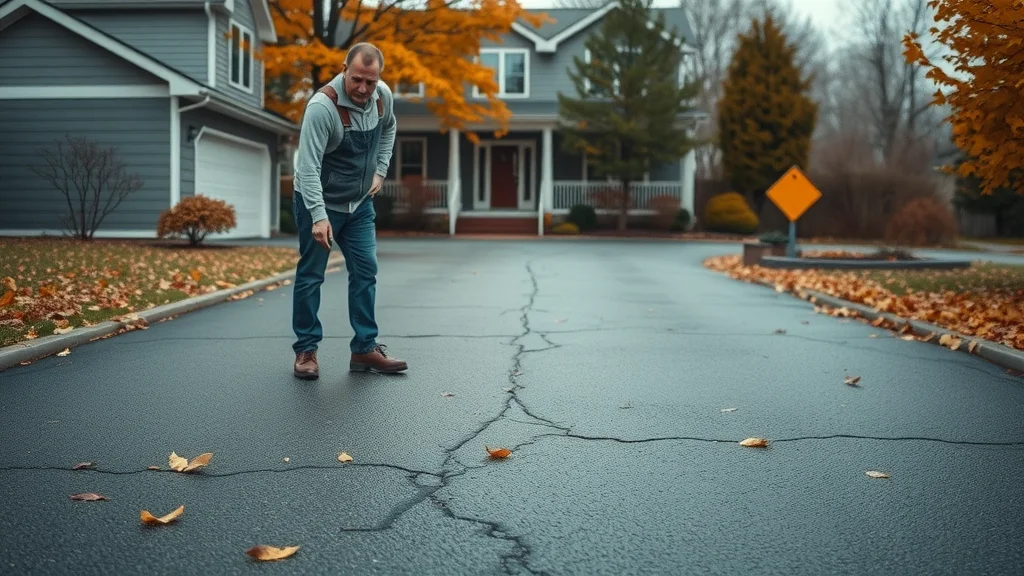
Driveway winter preparation isn’t just another chore—it’s essential for preventing ice formation, snow and ice buildup, and costly damage. When existing cracks, drainage problems, or fading go unchecked, freezing temperatures quickly worsen those issues. As the ground freezes and thaws, water expands in cracks, making them wider and more dangerous. For both asphalt and concrete driveways, early repairs and maintenance can save you hundreds on springtime repairs. Homeowners with gravel driveways face unique challenges, including rutting and washouts, but proactive attention now keeps winter headaches at bay. Ultimately, maintaining your driveway before winter is essential to preserve its integrity, ensure safety, and extend its lifespan as the seasons change.
What You’ll Learn: Mastering Driveway Winter Preparation
- How to spot urgent signs your driveway needs attention
- Strategies for effective driveway winter preparation
- Differentiating care for concrete driveway and gravel driveway surfaces
- Essential tips to protect your driveway from snow and ice
- Step-by-step winter care recommendations, including proper drainage and ice removal methods
Table: Key Signs, Risks, and Solutions for Driveway Winter Preparation
| Sign | Potential Winter Risk | Recommended Action |
|---|---|---|
| Spread Cracks | Ice formation, crumbling | Early crack sealing, patching |
| Drainage Issues | Ice melt retention, deep damage | Regrading, improve drainage |
| Faded Surface | UV and salt damage | Apply sealcoat |
| Rough or Uneven Areas | Pothole development | Patch and level |
| Small Potholes/Edge Crumbling | Worsening into larger damage | Immediate repair |
Cracks Are Starting to Spread: Prevent Ice Formation with Early Driveway Winter Preparation
How Surface Cracks Expose Your Driveway to Snow and Ice Damage
- Water infiltration expands with freezing temperatures
- Widening cracks lead to costly repairs in spring
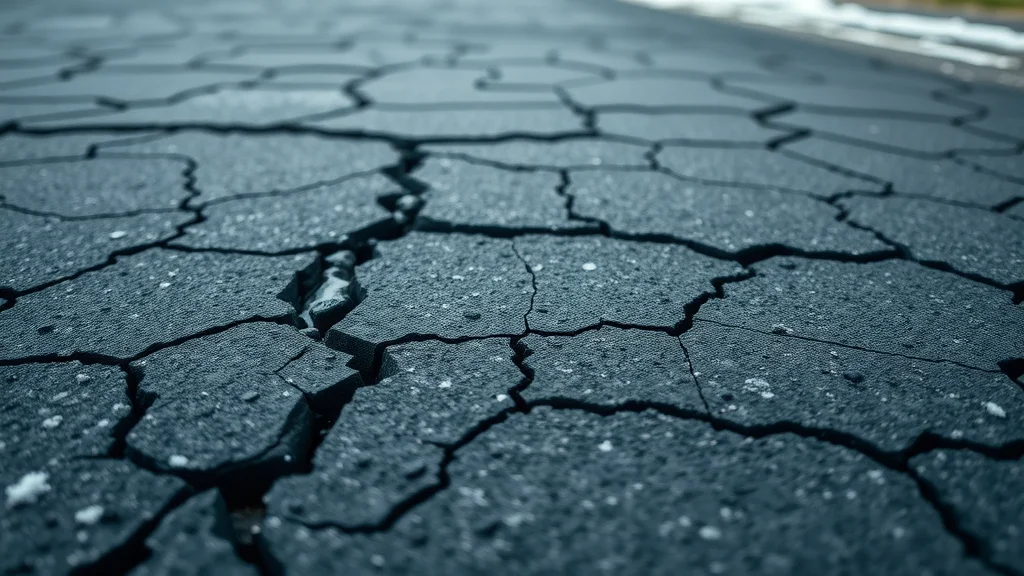
The moment you spot cracks spreading across your driveway, the clock is ticking. Even the tiniest surface crack is an open invitation for water to seep beneath the asphalt or concrete surface. When temperatures fall, that trapped moisture will freeze, expand, and force the cracks wider. This process, known as the freeze and expand cycle, can quickly transform a small crack into a crumbling, hazardous stretch of pavement. Ice formation within existing cracks not only undermines the driveway structure but also promotes pothole development after several freeze-thaw cycles.
For concrete driveways, spreading cracks expose the rigid concrete to more extreme stress, sometimes leading to extensive damage that affects both appearance and safety. Similarly, gravel driveway surfaces are prone to shifting and ruts when water infiltrates low spots and freezes. Sealing cracks on any surface greatly minimizes winter risk. When you take proactive steps early, you halt the entry of water, prevent ice buildup, and protect your driveway’s integrity straight through winter.
If you’re noticing cracks or uneven settling in your driveway, it’s important to address these issues promptly to avoid more extensive repairs later. For a closer look at how to handle asphalt settling and the best repair strategies, explore this practical guide on fixing asphalt settling quickly and effectively.
Best Winter Maintenance Practices for Asphalt, Gravel Driveway, and Concrete Driveway Surfaces
“Sealing even the smallest cracks prior to winter is one of the most effective ways to protect your driveway and prevent ice formation.” – Lenny’s Asphalt Expert
Effective driveway winter preparation always starts with early repairs. Begin by inspecting your asphalt or concrete driveway for visible cracks and applying a high-quality crack filler. For gravel driveways, regularly rake and top off areas where stones have washed away to ensure an even surface. It’s crucial to use materials designed for winter durability—many patches or sealers are specifically formulated to remain flexible in freezing conditions, helping to prevent ice formation and reduce damage from snow and ice. Incorporate routine ice removal and use ice melt products appropriate for your driveway’s surface to manage snow effectively. Proper drainage is also key during winter maintenance, ensuring meltwater doesn’t accumulate and freeze into dangerous patches. By following these steps, you will significantly reduce the risk of cracks and potholes worsening over the winter.
Drainage Problems: Ensure Proper Drainage for Effective Driveway Winter Preparation
Spotting Drainage Issues in Gravel Driveway and Concrete Driveway
- Puddles or standing water after rain
- Areas with inadequate slope or erosion
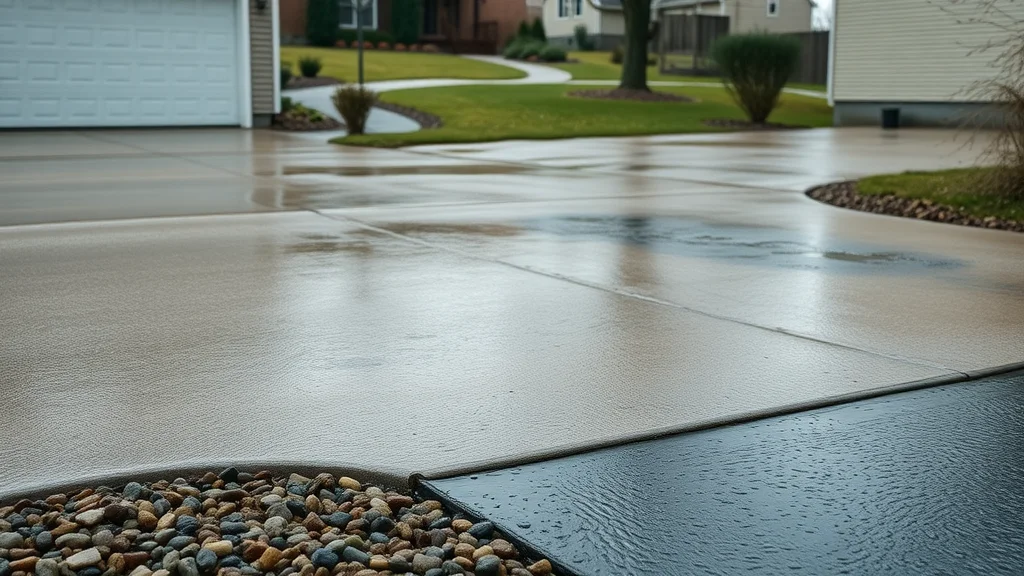
Drainage issues often go unnoticed until after a heavy rain, when puddles or standing water collect on your driveway. In gravel driveways, these low spots quickly become muddy and uneven, while on concrete surfaces, pooling indicates insufficient slope or eroded sections. As winter approaches, unresolved drainage problems mean water will remain trapped long after precipitation stops—increasing the risk of ice formation once the temperature drops. You may also see signs of erosion along the driveway edges where water consistently runs off. These visual cues mean your driveway is at higher risk for winter damage unless addressed.
To ensure your driveway’s winter readiness, regularly check for places where water remains for hours after a storm or snow melt. Proper drainage is just as critical for concrete driveways as gravel surfaces. Address these issues with grading or by adding materials to redirect water away from the surface. Creating gentle slopes and repairing eroded areas prevents pooling, supports effective ice removal, and stops moisture from degrading your driveway’s structure.
How Poor Drainage Intensifies Winter Care Challenges and Ice Melt Risks
- Standing water freezes, creating hazardous ice patches
- Prolonged moisture weakens foundation
Every pool of standing water left on your driveway is a future hazard. As temperatures fluctuate throughout late fall and winter, water trapped in low spots will freeze and thaw, resulting in slippery ice patches that are difficult to see and manage. These hazards not only endanger anyone walking or driving over your driveway but also complicate snow removal and increase the need for constant ice melt application. When ice melt isn’t used correctly, it can damage surfaces, especially concrete driveway and gravel driveway materials, leading to even more costly repairs.
Over time, the effects compound: prolonged moisture weakens your driveway’s foundation, causing subsidence, deep cracks, or sinkholes—especially in gravel driveways. In the case of concrete driveways, ongoing exposure to frost and water erodes the concrete in cold weather, making it brittle and more susceptible to damage from freeze-thaw cycles. To protect your driveway and simplify winter maintenance, address drainage issues before the first significant freeze.
Faded Color: Restore Your Asphalt’s Defense with Driveway Winter Preparation
The Importance of Sealcoating in Concrete Driveway and Gravel Driveway Winter Maintenance
- Restores protective layer against UV rays, snow, and ice melt chemicals
- Improves surface resistance to salt and road chemicals
“A fresh sealcoat every 2–3 years is the backbone of lasting driveway winter preparation.” – Lenny’s Asphalt Specialist
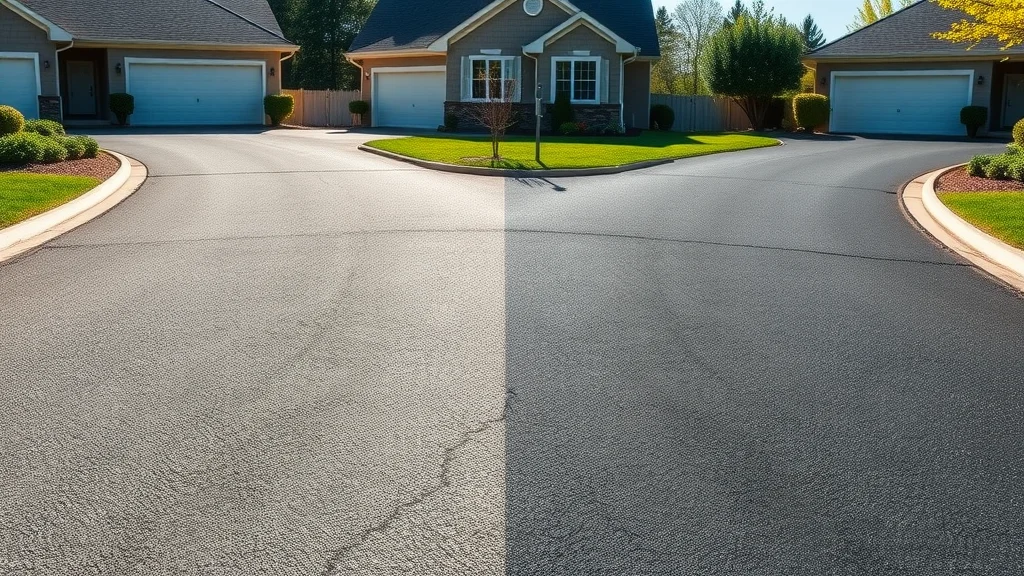
Has your once-lustrous blacktop faded to gray? That dull appearance is more than just an eyesore—it’s an indication your driveway’s protective surface has been worn down by oxidation and UV rays. Without this layer, your asphalt or concrete driveway is far more exposed to harsh winter elements such as snow, ice, and corrosive ice melt products. Sealcoating acts as a shield, bolstering the driveway’s defense against everything from UV rays and freezing temperatures to salt and road chemicals used during snow and ice events.
For both concrete and gravel driveways, routine sealcoating and topping off aggregate ensure the surface can withstand winter’s stress. The right sealant will prevent water and chemicals from penetrating the surface, helping maintain the driveway’s structural integrity and rich appearance year-round. If the color has faded or the surface feels brittle to the touch, prioritize applying a fresh sealcoat or, for gravel, replenishing the top layer as part of your winter maintenance planning.
Uneven Surfaces: Addressing Early Signs Before Potholes Form During Driveway Winter Preparation
Identifying and Leveling Dips in Your Concrete Driveway or Gravel Driveway
- Signs include uneven patches, dips, or rutting
- Patches ensure safe snow and ice removal
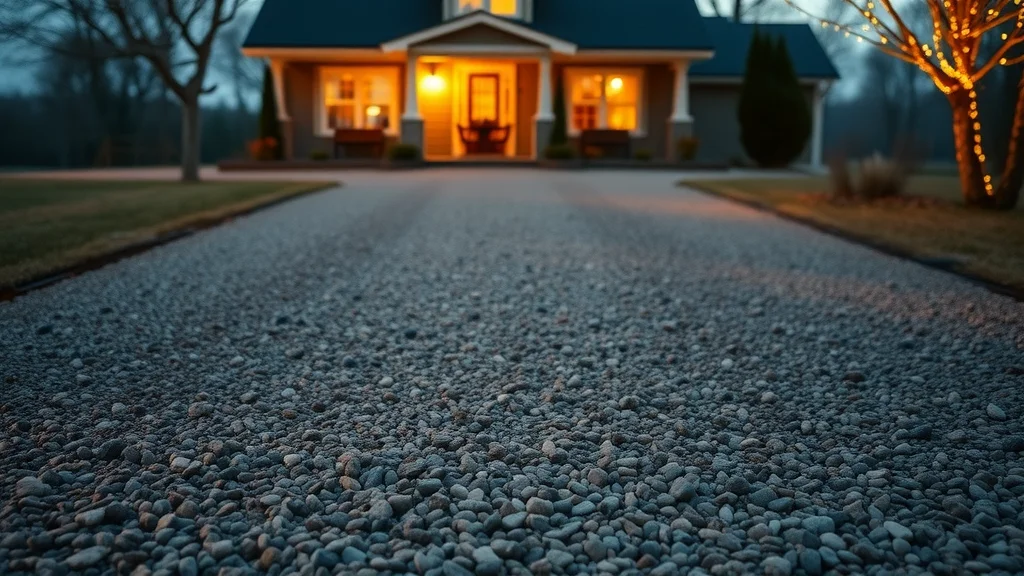
Don’t overlook subtle uneven areas, dips, or rutting on your driveway. These issues are telltale signs that water and weather are compromising your driveway’s base layers. If left untreated, these low spots give water a place to collect—setting the stage for freeze-thaw cycles that rapidly worsen the damage. Gravel driveways, in particular, are prone to ruts after heavy rain or snowmelt, while concrete slabs can settle unevenly due to erosion or shifting soil.
Addressing these issues during your fall driveway winter preparation is essential for two reasons: first, patches and leveling prevent further deterioration. Second, a smooth, even surface makes physical snow removal safer and more effective during the winter. By tackling problem areas with patching material or extra gravel for a gravel driveway, or resurfacing uneven sections of a concrete driveway, you’re minimizing the risk of potholes developing mid-winter and keeping your driveway accessible all season long.
Small Potholes and Edge Crumbling: Last Call for Effective Driveway Winter Preparation
Why Immediate Repairs Protect Your Driveway from Serious Winter Damage
- Pothole expansion from trapped water and freezing
- Professional patching to prevent further crumbling
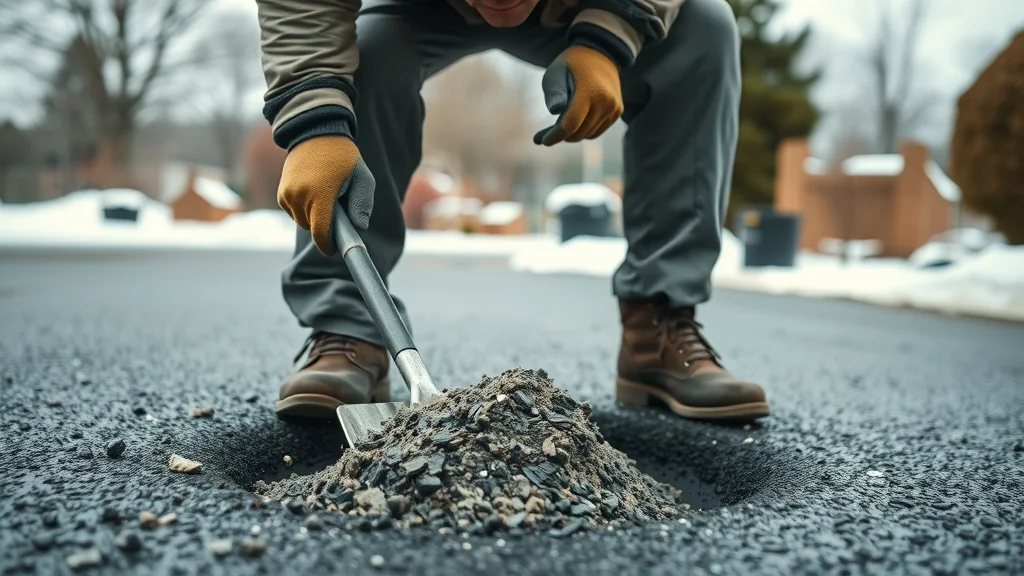
Small potholes and crumbling edges may seem like minor annoyances, but in winter, they’re a fast track to extensive damage. When water seeps into potholes or weak spots at the driveway’s edge, freezing temperatures force the pavement to expand and contract. Each freeze-thaw cycle makes the damage worse, causing the pothole to grow and the edges to buckle. Catching and repairing these issues before winter not only prevents the spread of damage but also ensures that your driveway remains safe to walk and drive on once the snow arrives.
Professional service for patching and edge repair is strongly recommended before the coldest months. Specialized materials are formulated to cure quickly and bond even in cold weather, helping you protect your driveway and avoid major repairs in the spring. Once snow and ice set in, most patching compounds won’t adhere properly, and repair options become limited—making early action your best defense.
Key Steps for Driveway Winter Preparation and Winter Maintenance
- Inspect thoroughly for the five warning signs
- Seal cracks and patch potholes
- Regrade and ensure proper drainage
- Sealcoat the surface for extra protection
- Keep driveway clear of snow and ice using recommended ice melt and safe ice removal tools
“Winter care starts in the fall—waiting until the first thaw is always too late.” – Industry Pro
Follow this checklist to guarantee your driveway winter preparation is complete. Our best advice: be proactive, not reactive. Inspect your asphalt, concrete driveway, or gravel driveway before the freeze, seal or patch cracks, address drainage challenges immediately, and reapply protective coatings if your surface has faded. By taking these steps, you minimize the risk of ice formation, make snow removal easier, and save on repairs in the spring. Most importantly, using the correct ice melt for your driveway type ensures you don’t compromise concrete or gravel integrity while keeping surfaces clear and safe.
A short explanatory video demonstrating inspection and repair of driveway cracks, patching potholes, sealcoating application, and effective drainage solutions with step-by-step visuals and winter environment, no narration, clear graphics, and professional visual quality.
People Also Ask: Top Driveway Winter Preparation Questions
How to prep a driveway for winter?
To prep a driveway for winter, thoroughly inspect for cracks, potholes, and drainage issues. Repair damage using proper sealers and patches, regrade low spots, and ensure effective water runoff. Apply a sealcoat to protect against snow, ice, and salt, and keep the driveway clear of debris throughout the season for optimal winter care.
Should I pretreat my driveway before snow?
Pretreating your driveway before snow is recommended. Apply a high-quality sealant to prevent water and ice from penetrating the surface, then use an ice melt compatible with your driveway type ahead of a snowstorm. This approach reduces the risk of ice bonding and eases snow removal.
How do you winterize a driveway?
Winterizing a driveway involves repairing cracks, improving drainage, and sealcoating the surface to prevent moisture infiltration. For concrete and gravel driveways, fill low spots and level any uneven areas. Maintain snow and ice removal using appropriate tools and ice melt products for the specific surface type.
What is the best driveway coating for winter conditions?
The best driveway coating for winter is an acrylic-resin based sealcoat for asphalt surfaces and a specialized epoxy or high-performance sealant for concrete driveways. These coatings offer superior resistance to ice melt chemicals, cold weather, and freeze-thaw cycles.
Expert Answers on Driveway Winter Preparation
- How to prep a driveway for winter? Begin with a detailed inspection for cracks, potholes, and drainage issues. Perform necessary repairs, apply a sealcoat, and keep the driveway clear of debris and standing water.
- Should I pretreat my driveway before snow? Yes, applying a sealant or ice melt before snowfall can help prevent snow and ice from bonding to the surface, making removal easier and reducing damage.
- How do you winterize a driveway? Repair cracks, improve drainage, apply a high-quality sealcoat, and keep the surface clear of snow and ice throughout winter. Use targeted winter maintenance for concrete driveways and gravel driveways.
- What is the best driveway coating for winter conditions? Acrylic-resin based sealcoats are ideal for asphalt, while specialized epoxy coatings offer superior protection and durability for concrete driveways in freezing weather.
Key Takeaways for Driveway Winter Preparation
- Early driveway winter preparation prevents costly spring repairs
- Address cracks, drainage, and surface issues before freezing weather arrives
- Choose sealing and patching solutions based on your driveway type
- Consistent winter maintenance is key to long-term durability
FAQs: Essential Driveway Winter Preparation and Maintenance Answers
- What are the risks of neglecting driveway winter preparation? Increased risk of cracks, potholes, and expensive repairs after thawing.
- How often should I reseal my driveway? Every 2-3 years, or when fading or surface brittleness appears.
- Is ice melt safe for all driveways? Use products suitable for your specific driveway material (asphalt, concrete, or gravel) to avoid damage.
Ready for Winter? Schedule Your Driveway Inspection & Repair: Call 610 366 9406
Don’t wait until spring reveals costly surprises. Call 610 366 9406 now and ensure your driveway is ready to withstand another Pennsylvania winter—smooth, safe, and resilient!
If you’re ready to take your driveway maintenance to the next level, consider learning how professional resurfacing and paving can transform your property’s curb appeal and durability. Discover the behind-the-scenes process, expert tips, and the long-term benefits of a well-executed driveway upgrade by visiting our in-depth feature on expert driveway resurfacing and paving in action. This resource is perfect for homeowners seeking advanced solutions or planning a major improvement in the future. By staying informed and proactive, you’ll ensure your driveway remains a valuable, lasting asset through every season.


